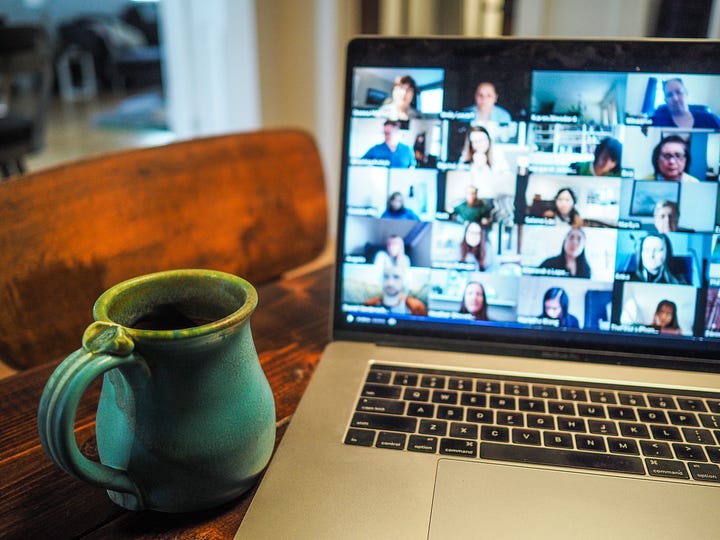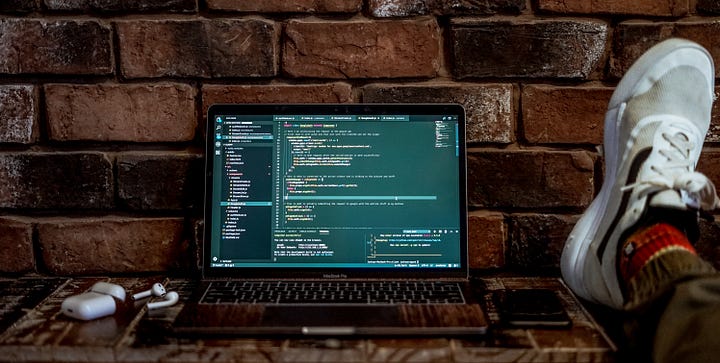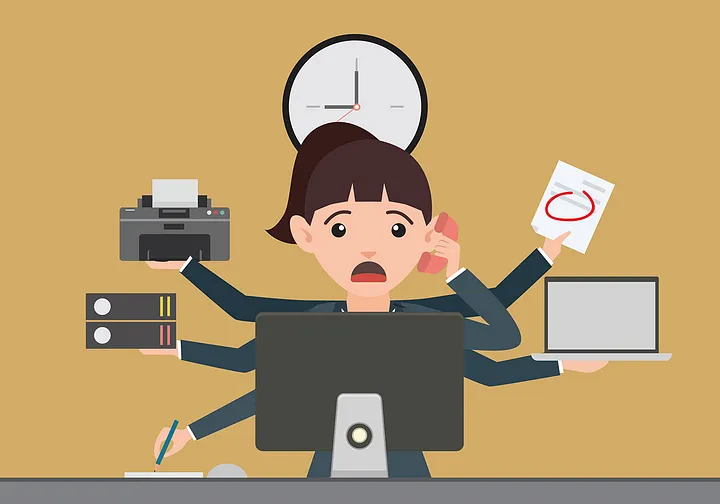7 reasons why video calls are so tiring and what to do about it.
We're just over a year into a global pandemic which has resulted in the majority of industries figuring out how to work from home. This has been easier for some industries than others. For software engineers, it's something that we have had some experience of before, but for the majority of us this will be the longest period we've done working from home. Some people love it, others hate it, but I've yet to find someone who doesn't find video calls tiring. In this article, I'm going to share my thoughts as to why this might be and some tips to help.

Communication
My wife and I recently had our first child and she obviously cannot talk, but through non verbal cues we can understand when she's sleepy, or tired, happy or sad. We've developed through our whole lives to pick up on gestures, posture, eye contact, facial expressions and touch. These body language cues add an extra depth to communication which we miss through video calls. Our instincts are trying to pick up on these cues subconsciously and so our bodies exert a lot more energy into trying to find them, and to portray them as well. Next time you're in a video call, notice how vigorously people nod or shake their head — they're over emphasising a normally subtle gesture to make sure that they're understood.
We're staring at our own face during video calls. Unless you carry a mirror around with you, this is not a normal conversation experience. Because we can see ourselves, we are more aware of the body language cues that we're displaying and are making more of an effort to display what we think others desire to see. This turns our conversation into a performance as we're constantly “acting”.
Rhythm
Conversations have a natural rhythm. Like the social cues from body language, we've grown accustomed to the natural cadence of a conversation, and for most of us it's clear when it's a good time for us to keep quiet or to talk. The problem comes when you can't pick up on the signals from other people that they're about to talk. On most video calls I attend there will be at least one occasion where two people speak at once and then either have a battle of politeness to see who talks first, or one or both of them keep talking until the other gives up.
The ease and frequency of this happening causes us to be a little hesitant or anxious about contributing to conversation because of the risk of seeming “rude”.
Purpose
All video calls have a fundamental purpose and focus, even if one has not been set explicitly. This can be really good to have meaningful conversations, but it's also tiring. Even social calls have a purpose — it's not the same as bumping into someone at the water cooler and having a blether.
Silence
Silence can be comfortable. Not in video calls apparently! It could be because someone is on mute (how many times have you heard “Sorry I was on mute”?), a natural lull in conversation, because nobody wants to be the first to respond to an open ended question, or because of connectivity issues. Our tolerance for silence has reduced drastically on video calls. Whether this is because of the focus driven nature of the calls, or some quirk of technology, it put's a lot of sub-conscious pressure on everyone to fill the silence as soon as possible.
Distraction
You're on your computer, you could look at that email, or do that small task, or read an interesting blog post about video calls and nobody would notice. You're needing to spend extra energy to keep up with the conversation and do whatever else it is you're trying to do at the same time.
We're used to having one focus point in movies and tv however if everyone has their camera on there's going to be a number of different parts of your screen moving at the same time. This isn't going to distract you enough to lose your train of thought, but it will use a little more brain power to keep focused. There's a reason you naturally close your eyes when trying hard to think about something.
Dominance
When someone talks on a video call, they're forcing everyone else to be quiet and listen to them. They're asserting their will on the group by declaring what they have to say has value and is worth the time and energy of everyone on the call to listen to them.
Subconsciously before speaking we're weighing up whether what we're going to say is valuable enough to take up everyone's time and potentially stop someone else from sharing something that could be of more value. This might actually be more of a problem for large in-person groups than on video calls, but it definitely contributes to the feeling of fatigue.
It's not all doom and zoom though!
Up to this point I've been focusing on the negatives of video calls, but I'd like to point out that there are also benefits to video calls. They can ease social anxiety and the structured nature of calls where one person talks at a time can be beneficial for people who struggle with social interactions. They can be recorded easily, extending the meetings reach. It's also a lot easier to give a talk when you don't have to stand in front of a large group of people, however for more experienced public speakers it's harder to gauge the audiences reactions.
What can I do about it?
Turn video off!
Try some calls without the video if it's appropriate. If you only have voice, you're not trying to figure out body language cues from a limited source. Also you're not going to be fixated on what expressions you're making. However there are definitely situations where it's more beneficial to see each other.
Avoid open ended questions (where possible)
People will hesitate to answer for fear of interrupting someone else who might be about to answer. Either ask specific people, or ask people to get in touch with you independently if needed, or have people put a message in the chat.
Have something to focus on
A text file of the meeting notes is perfect here as it keeps everyone on track with what's being discussed. Alternatively, a whiteboard, diagram or some code may equally be as relevant.
Ask if you really need to have a call
Don't have a call if you don't need one. Asynchronous communication is best. You don't always need everyone in the same place at the same time to make a decision. I'll have another blog post soon speaking more about this.
Silence is ok!
Let there be silence without feeling awkward about it.
Put your hand in the air
Most video call tools have some method to let people know you have something to say - use it! It works for school kids, it will work for your colleagues too.
Recognise video meetings are different to in person
Collaboration sessions aren't going to be the same as in the office. If you need to collaborate then do it with one or two people who you feel comfortable with and can have times of silence.
Keep it small
Fewer people means everyone can feel a bit more comfortable contributing.
Richard Bell
Self taught software developer with 12 years experience excelling at JavaScript/Typescript, React, Node and AWS.
I love learning and teaching and have mentored several junior developers over my career. I find teaching is one of the best ways to solidify your own learning, so in the past few years I've been maintaining a technical blog where I write about some things that I've been learning.
I'm passionate about building a teams culture and processes to make it efficient and satisfying to work in. In many roles I have improved the quality and reliability of the code base by introducing or improving the continuous integration pipeline to include quality gates.




